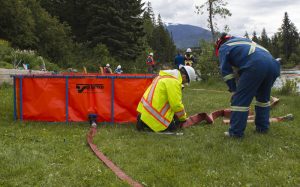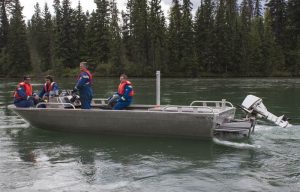
by EVAN MATTHEWS
With the Trans Mountain Expansion Project dominating headlines, Kinder Morgan has given a response — a spill response.
On Wednesday, Jun. 1, Kinder Morgan put on a simulation of a land-based spill, followed by the deployment of emergency response equipment on the Fraser River.
“This is an opportunity for us to get out and use one of our control points,” says Jason Turner, an environmental health and safety coordinator for Kinder Morgan.
“We use our equipment to deploy our booms, boats and skimmers. It’s an opportunity to train and to do an exercise simulating an oil spill.”
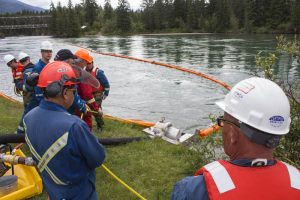
In the event of a spill, Turner says Kinder Morgan can respond within two hours.
“We have our OSCAR (Oil Spill Containment and Recovery) units strategically located throughout the pipeline,” says Turner. “We have units in Blue River, we have units in Jasper.”
He says equipment is obviously located with the recovery teams, and while there are teams in Blue River and Jasper, there are no response teams located directly in Valemount.
The Trans Mountain Pipeline crosses the Fraser River in the Robson Valley twice with one being at kilometer 458 and the other at kilometer 461. The pipeline also crosses the North Thompson River and Swift Creek in the Robson Valley.
There are various crossings over the Fraser River throughout the province, including the Lower Mainland.
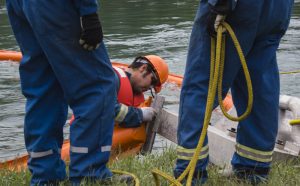
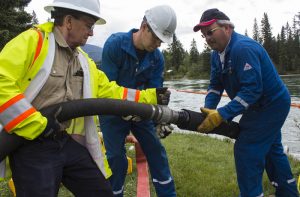
The oil moves through a hose toward a pump, which continues to move the oil. / EVAN MATTHEWS
